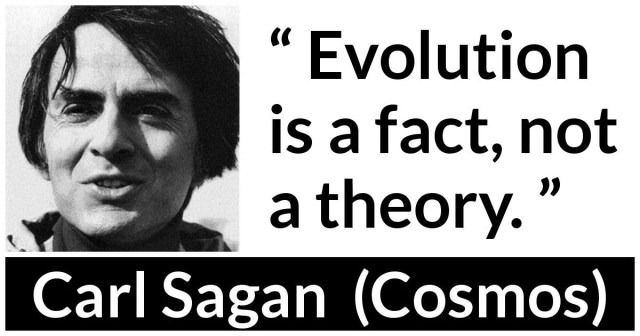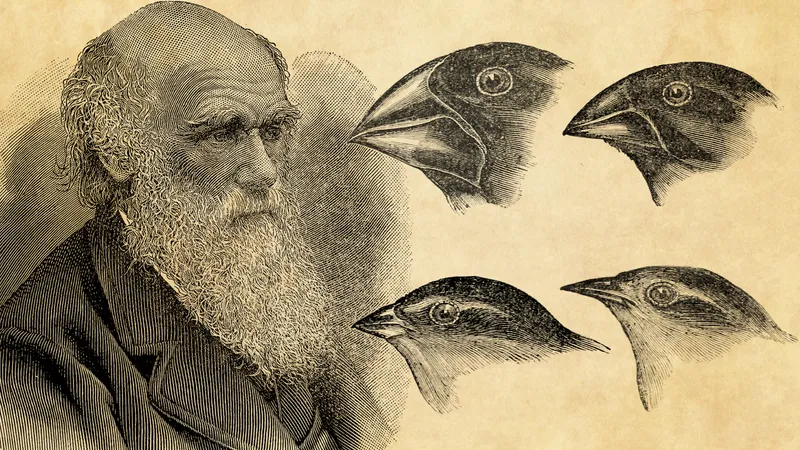The Theory of Evolution, first articulated by Charles Darwin in 1859, stands as one of the most transformative scientific concepts in human history. It revolutionized our understanding of life’s diversity, proposing that species change over time through natural selection.
Despite its robust scientific foundation, evolution remains a polarizing topic, celebrated by scientists as a fact yet contested by religious groups and skeptics who label it a myth or conspiracy.
This article addresses the question: Is evolution a fact, a theory, or both? Through an in-depth exploration of its origins, evidence, counterarguments, and modern relevance, we aim to provide clarity on this enduring debate.
This guide offers a detailed analysis of Darwin’s theory, supported by scientific evidence, historical context, and responses to common objections. With citations from peer-reviewed sources, it’s designed for students, educators, and curious readers seeking a thorough understanding of evolution’s validity and significance.
Darwin’s Theory of Evolution

Charles Darwin, a British naturalist born in 1809, developed the Theory of Evolution during a five-year voyage aboard the HMS Beagle (1831–1836). His observations of species across South America, the Galápagos Islands, and beyond sparked a revolutionary idea: species are not fixed but adapt to their environments over time.
In his seminal work, On the Origin of Species by Means of Natural Selection (1859), Darwin introduced natural selection, the process by which organisms with traits better suited to their environment survive and reproduce, passing those traits to their offspring.
Darwin’s key insight came from studying variations among species. For example, on the Galápagos Islands, he noted that finches had distinct beak shapes tailored to their food sources—some suited for cracking seeds, others for probing flowers.
This suggested that environmental pressures drive adaptations, leading to new traits over generations. Darwin proposed that, over vast timescales, these small changes could result in entirely new species, a process now known as speciation.
Historical Context: Evolution Before Darwin
Darwin wasn’t the first to propose evolutionary ideas. In the early 19th century, Jean-Baptiste Lamarck suggested that organisms adapt to their environment through behavior, with changes passed to offspring (e.g., a giraffe stretching its neck leads to longer-necked descendants).
This theory, known as Lamarckism, lacked empirical support and was later disproven by genetics. Erasmus Darwin, Charles’ grandfather, also speculated about species transformation but offered little evidence.
What set Darwin apart was his rigorous evidence collection and theoretical framework. His observations of fossils, geographic distribution, and species variation provided a robust foundation, transforming evolution from a hypothesis into a scientifically credible theory (Mayr, 1982).
The Scientific Evidence for Evolution
Evolution is both a fact—the observable change in species over time—and a theory, a well-substantiated explanation of how this change occurs. Below, we explore the four primary lines of evidence supporting evolution, each backed by extensive research.
1. The Fossil Record: A Chronicle of Life’s History

The fossil record is a cornerstone of evolutionary evidence, documenting life’s progression over billions of years. Fossils, preserved remains of ancient organisms, reveal a sequence of species transitioning from simple to complex forms.
For instance, the fossil Tiktaalik roseae, discovered in 2004, is a transitional species between fish and early tetrapods, with features like gills and limbs, bridging aquatic and terrestrial life (Daeschler et al., 2006).
Another example is the evolution of whales. Fossils like Ambulocetus, a 50-million-year-old “walking whale,” show a transition from land-dwelling mammals to fully aquatic whales, with adaptations like webbed feet and reduced hind limbs. Carbon dating confirms these fossils align with evolutionary timelines, dating back millions of years.
While skeptics point to “gaps” in the fossil record, fossilization is rare, requiring specific conditions like rapid burial in sediment. Despite this, thousands of transitional fossils—such as Archaeopteryx, linking dinosaurs to birds—provide a robust timeline of evolutionary change (Prothero, 2017).
Key Insight: Fossils demonstrate gradual changes in species, supporting Darwin’s theory of incremental adaptation.
2. Genetics: The Molecular Basis of Evolution

The discovery of DNA in the 20th century revolutionized evolutionary biology. Genetic analysis reveals striking similarities across species, pointing to common ancestry. Humans share approximately 98–99% of their DNA with chimpanzees and bonobos, suggesting a shared ancestor millions of years ago (The Chimpanzee Sequencing and Analysis Consortium, 2005).
Shared genetic markers, like pseudogenes (non-functional DNA remnants), further confirm evolutionary relationships.
Mutations, random changes in DNA, are a driving force of evolution. Beneficial mutations, such as those conferring resistance to disease, are passed to offspring, shaping species over time. For example, antibiotic resistance in bacteria demonstrates evolution in action, as resistant strains survive and reproduce under selective pressure.
The universal genetic code—shared by all living organisms—suggests a single origin of life. Comparative genomics, which maps DNA across species, reveals how small genetic changes accumulate, leading to new traits and species.
Key Insight: Genetic similarities and mutations provide molecular evidence for common ancestry and evolutionary change.
3. Comparative Anatomy and Embryology: Shared Blueprints

Comparative anatomy studies reveal homologous structures—body parts with similar designs across species, adapted for different functions. The forelimbs of humans, bats, whales, and cats share a common bone structure (humerus, radius, ulna), indicating a shared ancestor.
These similarities are evident even in embryonic stages, where diverse species develop nearly identical structures before diverging (Gilbert, 2000).
Embryology further supports evolution. Early embryos of humans, fish, and chickens share features like gill slits and tails, reflecting their evolutionary history. For example, human embryos briefly develop gill-like structures, a vestige of our aquatic ancestors, which later transform into jaw and ear structures.
This phenomenon, known as ontogeny recapitulates phylogeny, underscores evolutionary connections.
Key Insight: Homologous structures and embryonic similarities reveal shared ancestry and developmental patterns.
4. Biogeography: Geography Drives Adaptation

Biogeography, the study of species distribution, shows how geographic isolation shapes evolution. Darwin’s observations in the Galápagos Islands highlighted how species like tortoises and finches adapted to local conditions, developing distinct traits. For instance, Galápagos finches have beak shapes tailored to their island’s food sources, a classic example of adaptive radiation.
Similarly, Australia’s marsupials (e.g., kangaroos, koalas) evolved unique traits due to the continent’s isolation, differing from placental mammals elsewhere.
Biogeography explains why species in similar environments, but different regions, develop analogous traits—a phenomenon called convergent evolution (e.g., wings in birds and bats).
Key Insight: Geographic isolation drives unique adaptations, as seen in Galápagos species and Australian marsupials.
Evolution in Action: Modern Examples
Evolution is not just a historical process—it’s observable today. In species with short lifespans, such as bacteria, evolution occurs rapidly. Antibiotic resistance in bacteria, like Staphylococcus aureus, emerges when resistant strains survive treatment and proliferate. Similarly, pesticide resistance in insects and herbicide resistance in weeds demonstrate natural selection in real time.
In longer-lived species, evolution is slower but still evident. For example, the peppered moth in England shifted from light to dark coloration during the Industrial Revolution, as darker moths were better camouflaged against polluted trees, improving their survival (Majerus, 1998).
These examples underscore that evolution is an ongoing process, observable in both laboratory and natural settings.
Is Evolution a Fact or a Theory?

In scientific terms, a theory is a well-substantiated explanation supported by extensive evidence, not a mere guess. Evolution is both a fact—species change over time, as evidenced by fossils, genetics, and more—and a theory, providing a framework (natural selection) to explain this change.
As Carl Sagan noted, “Evolution is a fact, not a theory,” emphasizing its observability in real-time phenomena like bacterial resistance (Sagan, 1996).
The scientific community overwhelmingly supports evolution, with over 99% of biologists accepting it as fact, according to surveys by the National Academy of Sciences. The theory’s predictive power—used in fields like medicine and agriculture—further validates its reliability.
Counterarguments Against Evolution
Despite its scientific rigor, evolution faces opposition, primarily from religious groups and skeptics. Below, we address the main objections and provide evidence-based responses.
1. Religious Objections: Evolution vs. Divine Creation

Many religious groups, particularly those adhering to literal interpretations of scriptures, argue that evolution contradicts divine creation. Texts like the Bible or Quran describe species as created in their current form by a deity, leading some to reject evolution as a myth.
In Darwin’s era, he faced accusations of heresy from Christian authorities, reflecting the tension between science and religion.
Response: Science and religion address different questions—science explains how life evolves, while religion explores why life exists. Many religious denominations, including the Catholic Church and moderate Protestant groups, accept evolution as compatible with faith, viewing it as a mechanism of divine creation.
For example, Pope Francis endorsed evolution in 2014, stating it aligns with theological beliefs. Personal faith varies, but evolution’s scientific validity is independent of religious doctrine.
2. Gaps in the Fossil Record
Skeptics argue that “missing links” in the fossil record undermine evolution, claiming a complete record of every transitional form should exist.
Response: Fossilization is rare, requiring specific conditions like rapid burial in sediment. Despite this, the fossil record is robust, with discoveries like Tiktaalik and Archaeopteryx filling key gaps. Ongoing excavations continue to uncover transitional fossils, and the existing record provides ample evidence of gradual change (Prothero, 2017).
3. “It’s Just a Theory”

Critics often misinterpret “theory” as a guess, arguing that evolution lacks the certainty of a scientific law.
Response: In science, a theory is a tested, evidence-based explanation, like the theory of gravity or relativity. Evolution is supported by decades of research across disciplines, making it as robust as any scientific law. The “just a theory” argument stems from a misunderstanding of scientific terminology, often exploited to discredit evolution.
4. Conspiracy Theories
Some skeptics claim evolution is a fabricated agenda to secure funding or promote secularism. Others allege that fossils are falsified to deceive the public.
Response: The global scientific community operates independently, with peer-reviewed research openly accessible. Fossils, DNA sequences, and other data are subject to rigorous scrutiny, making widespread fabrication implausible.
Evolution’s evidence spans thousands of studies from universities and institutions worldwide, conducted without a unified agenda. Conspiracy claims lack credible evidence and ignore the transparency of scientific processes.
The Cultural and Social Debate
The opposition to evolution often reflects cultural lag, a sociological concept where societal beliefs resist scientific advances that challenge established norms (Ogburn, 1922). Religious and cultural dogmas can create resistance, as seen in historical opposition to heliocentrism or modern debates over evolution in education.
In some regions, creationism is taught alongside or instead of evolution, despite court rulings affirming evolution’s scientific basis (e.g., Kitzmiller v. Dover, 2005).
This tension highlights the challenge of aligning scientific evidence with deeply held beliefs. Education and open dialogue can bridge this gap, encouraging critical thinking and evidence-based understanding.
Why Evolution Matters Today
Evolution is not just a historical concept—it’s a cornerstone of modern science. In medicine, understanding evolution helps develop vaccines and combat antibiotic resistance. For example, tracking viral mutations informs flu vaccine design. In agriculture, evolutionary principles guide crop breeding and pest management. In conservation, evolution informs strategies to protect endangered species by preserving genetic diversity.
Beyond practical applications, evolution fosters critical thinking, encouraging us to question assumptions and seek evidence. It provides a unifying framework for understanding life’s diversity, from bacteria to humans, and our place in the natural world.
Conclusion: Evolution as a Scientific Fact

The Theory of Evolution, built on Darwin’s insights and strengthened by modern science, is a fact supported by fossils, genetics, anatomy, biogeography, and real-time observations. While religious and cultural objections persist, the scientific consensus is clear: evolution is a well-substantiated reality, not a mere speculation. Its predictive power and applications in medicine, agriculture, and beyond underscore its importance.
For those exploring evolution, start with Darwin’s On the Origin of Species or modern resources like peer-reviewed journals (e.g., Nature, Science) or educational platforms like the National Center for Science Education. Whether you’re a skeptic or a science enthusiast, engaging with the evidence can deepen your understanding of life’s remarkable journey.
References
-
Daeschler, E. B., Shubin, N. H., & Jenkins, F. A. (2006). A Devonian tetrapod-like fish and the evolution of the tetrapod body plan. Nature, 440(7085), 757–763.
-
Gilbert, S. F. (2000). Developmental Biology. Sinauer Associates.
-
Majerus, M. E. N. (1998). Melanism: Evolution in Action. Oxford University Press.
-
Mayr, E. (1982). The Growth of Biological Thought. Harvard University Press.
-
Ogburn, W. F. (1922). Social Change with Respect to Culture and Original Nature. B. W. Huebsch.
-
Prothero, D. R. (2017). Evolution: What the Fossils Say and Why It Matters. Columbia University Press.
-
Sagan, C. (1996). The Demon-Haunted World: Science as a Candle in the Dark. Random House.
-
The Chimpanzee Sequencing and Analysis Consortium. (2005). Initial sequence of the chimpanzee genome and comparison with the human genome. Nature, 437(7055), 69–87.

This is Kyle Thomas, a professional writer, and a news editor. I started my career as a blogger who writes on various topics and then I decided that I should join a NEWS agency where I can work as a NEWS reporter. So, I joined a renowned agency in the town as an internet and after getting 2 years of experience, now I am working as a senior NEWS reporter for The Daily NEWS Times.













